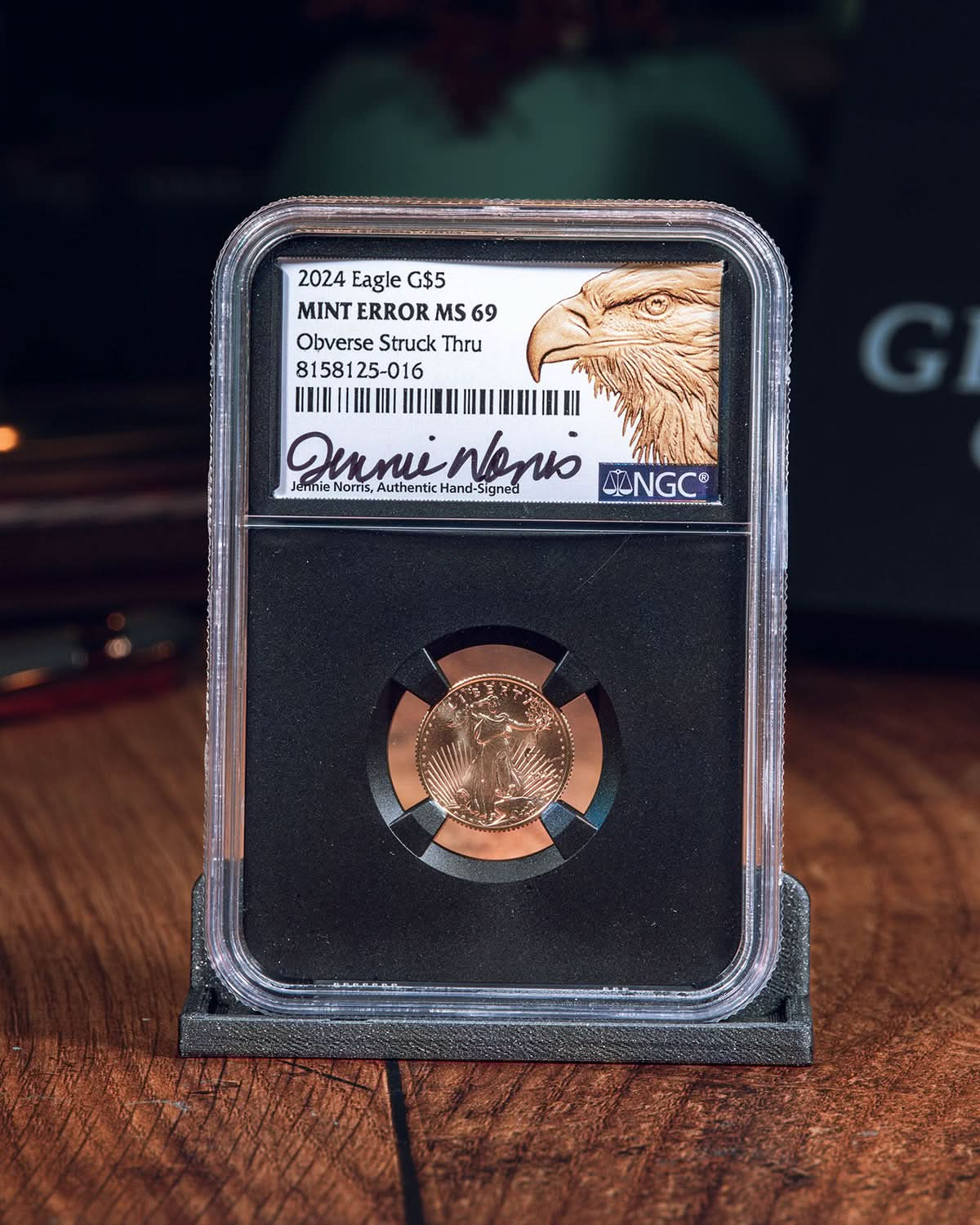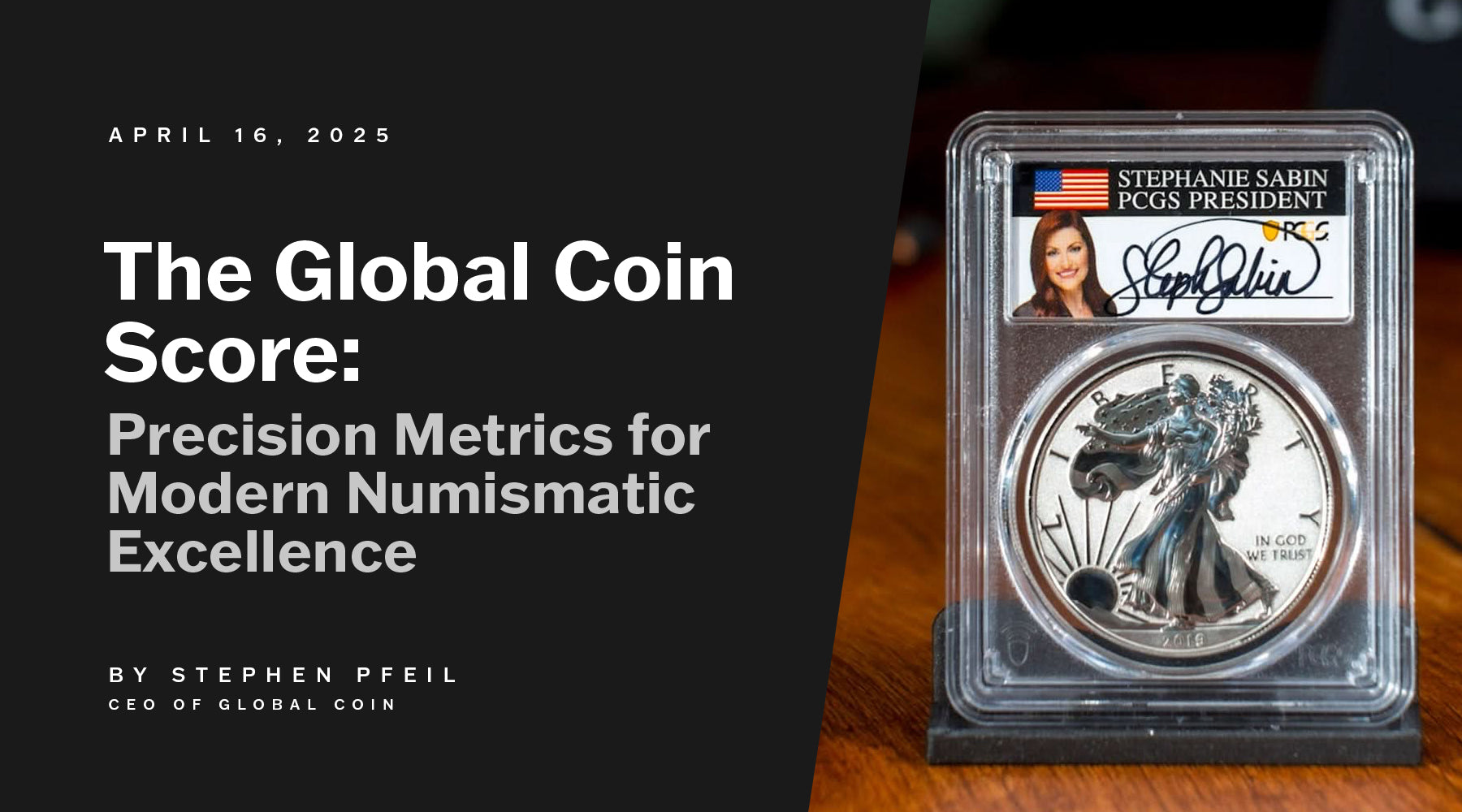Is There More Paper Gold Than Physical Gold? Key Factors Contributing to the Discrepancy
Global Coin is a dealer of precious metal coins and does not provide investment, financial, or legal advice. Any information provided in this content, including market commentary and insights, is for informational purposes only and should not be construed as investment advice. Investors should conduct their own due diligence and consult with a qualified financial professional before making any investment decisions. Gold and rare coin investments involve risks, and past performance is not indicative of future results.
Key Takeaways
The possibility of more "paper gold" (ETFs, futures contracts, and other gold-backed financial instruments) existing than actual physical gold is not only plausible but widely recognized within financial and commodity markets. Here's why:
-
Fractional Reserve Practices
-
Many gold ETFs, futures, and similar instruments operate on fractional reserves, meaning they represent claims to gold that are not fully backed by physical holdings. The paper gold value is subject to risks due to the potential instability of the paper gold market, which can be significantly impacted during financial or political turmoil.
-
For example, an ETF might issue shares corresponding to a certain quantity of gold without actually holding that exact quantity in its vaults. Holding physical gold as a reserve asset is significant because it provides intrinsic value and liquidity, which helps stabilize fiat currencies.
-
Leverage in Futures Markets
-
Futures contracts often allow for substantial leverage, meaning traders can control large amounts of gold with only a fraction of the value posted as margin.
-
This leads to a situation where the volume of gold contracts traded far exceeds the amount of physical gold available for delivery.
-
Derivatives and Synthetic Gold Instruments
-
Financial derivatives tied to gold, such as options and swaps, further multiply the claims on a limited physical supply.
-
These instruments are used for hedging and speculation, amplifying the “paper gold” market.
-
Lack of Physical Delivery in Most Contracts
-
The majority of gold futures and ETFs are settled in cash rather than physical gold.
-
This practice means that physical delivery is rare, and the underlying physical gold reserves are not always sufficient to meet all potential claims.
-
Mismatched Gold Holdings and Issuance
-
Some institutions may overstate their physical gold reserves or lend their gold holdings multiple times, creating multiple claims on the same gold bars.
-
This practice increases the amount of “paper gold” relative to actual bullion.
Implications of the Paper-to-Physical Gold Ratio
-
Market Volatility
-
The disconnect between paper gold and physical gold can exacerbate market volatility, as prices may reflect speculative trading rather than actual physical demand.
-
Risk of a “Run” on Physical Gold
-
If there is a sudden surge in demand for physical delivery (e.g., during a financial crisis), institutions may struggle to meet these claims, revealing the imbalance. Additionally, storing physical gold comes with notable disadvantages, including high costs for secure storage and the risk of theft, necessitating additional security measures. The illiquidity of physical gold can make accessing cash quickly challenging, and price volatility can impact investments in physical gold.
-
Price Manipulation Concerns
-
Critics argue that the large volume of paper gold allows for price manipulation, as financial instruments can be used to suppress or inflate gold prices without physical transactions.
-
Systemic Risk in the Gold Market
-
A major divergence between paper and physical gold could undermine trust in gold-backed financial instruments, potentially destabilizing the market.
Estimates of the Paper-to-Physical Ratio
While the exact ratio is challenging to pinpoint, estimates suggest that the amount of paper gold may exceed the physical supply by as much as 100:1 or more in certain markets. This means that for every ounce of physical gold, there could be 100 ounces worth of claims through paper instruments. This disparity underscores the importance of physical gold investment, as owning tangible assets like gold coins, bars, and rounds from reputable dealers can provide reliability and security that paper gold cannot.
Executive Summary
The existence of more paper gold than actual physical gold is a structural feature of the modern gold market. While this system provides liquidity and facilitates trading, it also carries risks, particularly during periods of financial instability when confidence in the system may be tested. Investors concerned about these dynamics often prefer physical gold or instruments with allocated storage to ensure direct ownership of tangible assets. Interested in a deep dive? Read On...
Is There More Paper Gold Than Physical Gold? A Comprehensive Analysis

Understanding Paper Gold and Physical Gold
Paper gold refers to any form of gold investment that does not involve owning physical gold, such as exchange-traded funds (ETFs) and gold futures. Paper gold investments are subject to counterparty risk and lack the tangibility and security of physical gold investments.
Physical gold refers to actual gold bullion, coins, or bars that an investor can hold in their hand. Investing in physical precious metals, particularly gold, offers advantages such as long-term value, liquidity, and ease of distribution among heirs, making it ideal for inheritance and wealth preservation. Physical gold is a tangible asset that is valued for its rarity and durability.
The Rise of Paper Gold Investments
Paper gold investments have become increasingly popular in recent years due to their accessibility and liquidity. Paper gold investments can provide a convenient way to invest in gold without the need to store physical gold. Examples of paper gold investments include gold ETFs, gold futures, and gold options. Paper gold investments can be traded on various financial markets, including the London Bullion Market and Comex.
The Value of Physical Gold

Physical gold is a valuable and stable investment that has been a reliable store of wealth and hedge against inflation and economic turmoil for thousands of years. Physical gold is a tangible asset that can be held and touched, providing a sense of security and tangibility. Physical gold is recognized globally as a valuable commodity, making it relatively easy to buy and sell. Physical gold can be used as a hedge against inflation and currency risks.
Market Imbalances

Market imbalances can significantly impact the gold market, particularly when it comes to the paper market for gold investments. One of the primary concerns is the vast difference between the paper gold market and the physical gold market. The paper gold market is estimated to be around USD 200-300 trillion, while the physical gold market is only around USD 11 trillion. This discrepancy can lead to a situation where the paper gold market is not backed by sufficient physical gold, creating a risk of a market imbalance.
Another market imbalance is the dominance of unallocated metal in the London precious metals market. Unallocated metal accounts for around 95% of transactions, the gold standard which means that the buyer does not physically hold the gold. This can lead to a situation where the physical gold market is not able to meet the demand for physical gold, causing prices to rise.
Furthermore, the gold market is also subject to market manipulation, which can lead to market imbalances. For example, in March 2020, several gold dealers sold significant amounts of physical gold.
The Paper Gold Market: Size and Structure
The paper gold market is vastly larger than the physical gold market, with an estimated USD 200-300 trillion in paper gold compared to USD 11 trillion in physical gold. The majority of paper gold is in the form of contracts traded on the London Bullion Market and Comex, where bullion banks engage in fractional reserve bullion banking. Bullion banks issue gold contracts that vastly exceed the amount of gold they hold on deposit, similar to conventional banks with liabilities that exceed reserves. There is a risk of a run on physical gold if there is a sudden loss of confidence in the paper gold market.
Selling Physical Gold: Strategies and Considerations

Selling physical gold can be a complex process, and investors should consider various factors before making a decision. In contrast to price of gold, the process to sell gold in the form of paper gold is much easier and quicker, as it eliminates the need for storage and transportation considerations.
Investors can sell physical gold through various channels, including online marketplaces, coin shops, and bullion dealers. The price of physical gold is influenced by various market factors, including gold prices, supply and demand, and market sentiment. Investors should ensure that they are selling physical gold to a reputable dealer and will buy gold at a fair price.
The Future of Gold: Trends and Outlook

The demand for physical gold is expected to continue growing in the coming years, driven by increasing demand from central banks and individual investors. The paper gold market is expected to continue growing, driven by increasing demand for gold investments and the convenience of paper gold. The World Gold Council predicts that the gold market will continue to grow, driven by increasing demand from emerging markets and central banks.
Physical Gold vs. Paper Gold: Why Tangible Wealth Matters
At Global Coin, we believe that true financial security comes from owning tangible, high-value assets, not just paper promises. The imbalance between paper gold (ETFs, futures, and derivatives) and physical gold raises critical concerns for investors. While the paper gold market operates on fractional reserves and leverage, actual physical gold remains scarce, historically stable, and universally valued.
As financial uncertainty grows, paper gold’s reliance on financial institutions, counterparty risk, and potential supply mismatches could create instability. By contrast, physical gold—especially rare, investment-grade coins—offers true ownership, security, and wealth preservation. Investors who prioritize legacy-building, portfolio stability, and inflation protection recognize that only physical assets provide real, lasting value.
At Global Coin, we specialize in exclusive access to rare and collectible gold coins, ensuring that our clients hold assets with both historical significance and financial strength. In an era of market uncertainty, trust in what you can hold—real gold, real wealth, real security.
Conclusion: Paper Gold vs. Physical Gold
Physical gold and paper gold are two different investment options that offer different benefits and risks. Physical gold is a tangible asset that provides a sense of security and tangibility, while paper gold investments offer accessibility and liquidity. Investors should consider their investment goals and risk tolerance before deciding between physical gold and paper gold investments.








Leave a comment
This site is protected by hCaptcha and the hCaptcha Privacy Policy and Terms of Service apply.